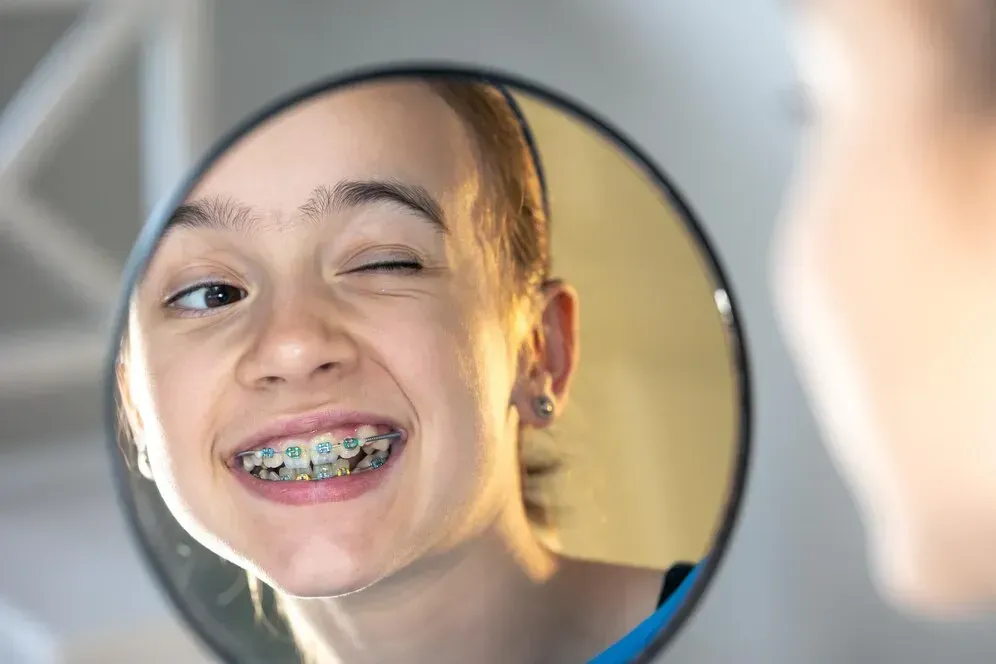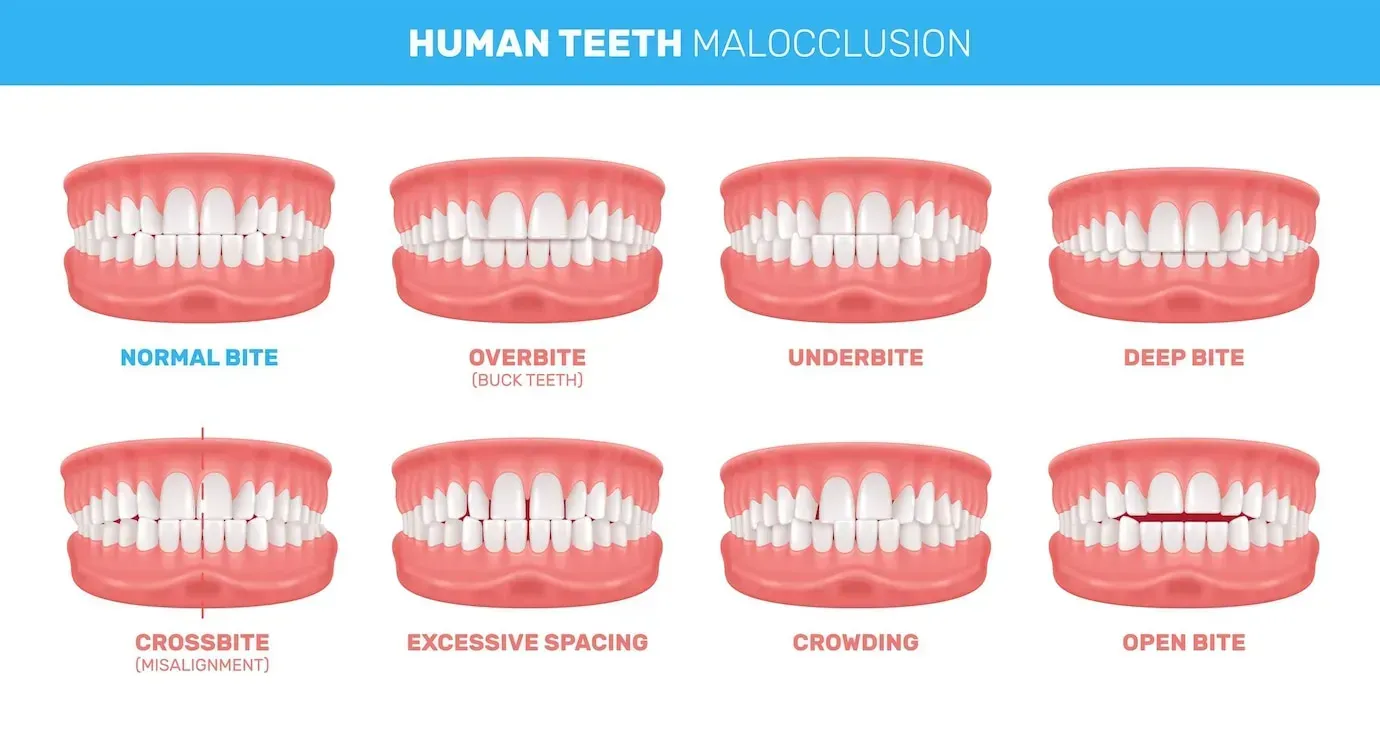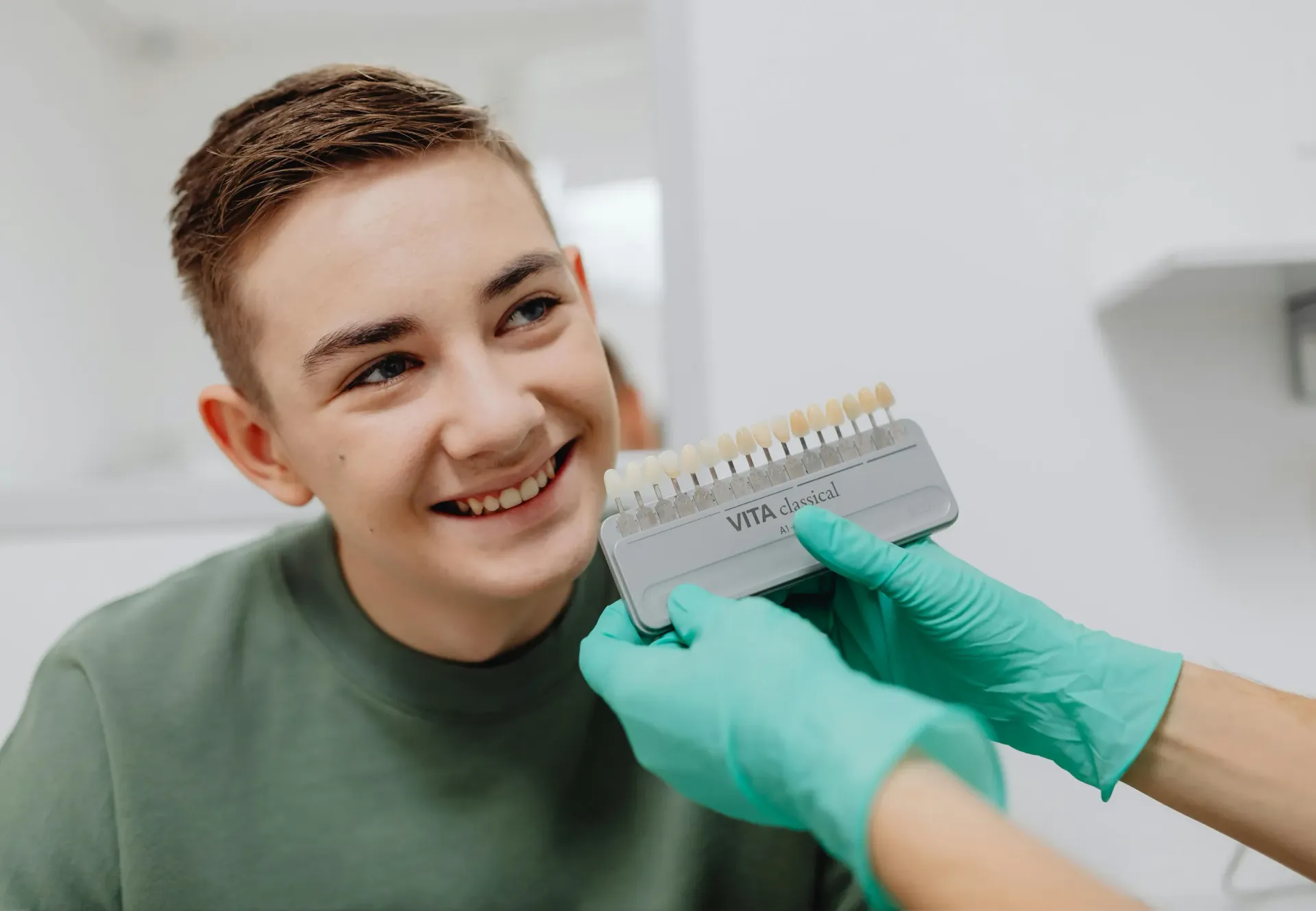Top Benefits of Early Orthodontic Intervention for Children

Top Benefits of Early Orthodontic Intervention for Children
Early orthodontic intervention, also called Phase I treatment, focuses on fixing dental and jaw problems in children before they fully develop. This type of treatment is usually done between the ages of 6 and 10, while the teeth and jaw are still growing. Catching these issues early can stop them from getting worse later.
The benefits of early treatment go beyond a straighter smile. It helps guide healthy jaw growth, improves how teeth work, and lowers the chances of needing more serious treatments in the future. In this guide, we’ll explain why starting orthodontic care early is a smart choice for your child’s oral health.
What Is Early Orthodontic Intervention?
Early orthodontic intervention, or Phase I treatment, is the first step in fixing dental and jaw problems in young children. Unlike traditional braces, this treatment is focused on guiding the growth of the jaw and making room for adult teeth to come in properly. It helps correct problems before they get worse or harder to treat.
When It’s Recommended
Orthodontists usually suggest Phase I treatment for children between the ages of 6 and 10. This is when baby teeth are still present, and the jaw is growing. Common signs that may need early treatment include:
- Crowded or crooked teeth.
- Bite problems like overbites, underbites, or crossbites.
- Thumb-sucking or other habits that affect the teeth.
- Losing baby teeth too early or too late.
Starting treatment during this stage can prevent future issues, making later orthodontic care easier and faster.
Guides Proper Jaw Growth
One of the main benefits of early orthodontic intervention is that it helps guide the proper growth and development of the jaw. During childhood, the jaw is still forming, which makes it easier to adjust its position and size.
How It Works
Orthodontic appliances, like expanders or headgear, are often used during Phase I treatment. These devices help align the upper and lower jaws, ensuring they grow in the right direction. This reduces the chance of problems like misaligned bites or uneven jaw growth.
Why It’s Important
When the jaw grows properly, it prevents issues like severe overbites, underbites, and crossbites. If left untreated, these problems can lead to pain, difficulty chewing, and even speech issues. Early treatment helps avoid these complications and sets the foundation for a balanced, healthy bite.
Creates Space for Permanent Teeth
Another major advantage of early orthodontic treatment is that it creates the necessary space for permanent teeth to grow in the correct position. Without this intervention, overcrowding can occur, leading to alignment problems and potential oral health issues.
How It Works
During Phase I treatment, orthodontists use appliances like expanders or partial braces to gently widen the jaw. This process ensures there’s enough room for adult teeth to erupt naturally, minimizing the risk of overlapping or crooked teeth.
Long-Term Benefits
By creating space early, the need for tooth extractions or more complex procedures in the future is significantly reduced. Proper spacing also helps maintain better oral hygiene, as straight teeth are easier to clean, reducing the risk of cavities and gum disease.
Prevents Severe Bite Problems
Early orthodontic treatment can correct bite issues, such as overbites, underbites, and crossbites, before they become severe. Addressing these problems during childhood is easier and often more effective than waiting until the jaw is fully developed.
How It Works
Orthodontic appliances are used to gradually adjust the alignment of the teeth and jaws. These devices guide the upper and lower jaws into a balanced position, ensuring they fit together properly when biting or chewing.
Functional Benefits
Correcting bite problems early helps improve chewing and speech. It also reduces strain on the jaw muscles and joints, preventing issues like TMJ disorders. Additionally, fixing bite problems at a young age lowers the likelihood of wear and tear on teeth caused by misalignment.
Addresses Harmful Habits
Certain childhood habits, like thumb-sucking or tongue thrusting, can lead to dental issues if not addressed early. Early orthodontic intervention helps break these habits and prevents long-term damage to the teeth and jaw.
Common Harmful Habits
- Thumb-Sucking: Prolonged thumb-sucking can push teeth out of alignment and affect jaw growth.
- Tongue Thrusting: This habit puts pressure on the teeth, leading to open bites or misalignment.
- Prolonged Pacifier Use: Extended use of pacifiers can cause similar problems to thumb-sucking.
How Orthodontics Helps
Orthodontists use appliances like habit-breaking devices to gently discourage these behaviors. These tools guide the teeth and jaw into proper alignment while helping the child overcome the habit.
Long-Term Benefits
Stopping these habits early prevents bite issues, misaligned teeth, and the need for more extensive treatments later. It also supports healthy jaw development, ensuring a better foundation for permanent teeth.
Boosts Confidence and Social Comfort
Early orthodontic treatment not only improves oral health but also has a positive impact on a child’s confidence. A straighter, healthier smile can make children feel more comfortable in social settings, especially during their formative years.
Why It Matters
Children with visible dental issues, like crooked teeth or a misaligned bite, may feel self-conscious or experience teasing from peers. Early intervention corrects these problems before they become a source of embarrassment or discomfort.
Emotional Benefits
- Improved Self-Esteem: A well-aligned smile helps children feel more confident in their appearance.
- Better Social Interaction: Children are more likely to smile and engage with others when they aren’t worried about how their teeth look.
Long-Term Impact
Building confidence at a young age can have lasting effects on a child’s emotional well-being. Early orthodontic care sets the stage for a lifetime of healthy, confident smiles.
When Should You Consider Early Orthodontic Treatment?
Determining the right time for orthodontic care is crucial for achieving the best results. Early evaluations allow orthodontists to identify potential issues and decide whether Phase I treatment is necessary.
Recommended Age
The American Association of Orthodontists recommends that children have their first orthodontic evaluation by age 7. At this stage, baby teeth are still present, but permanent teeth are beginning to come in, making it easier to detect alignment or bite problems.
Signs to Watch For
Parents should consider an orthodontic consultation if they notice any of the following in their child:
- Crowded or crooked teeth.
- Difficulty biting or chewing.
- Early or late loss of baby teeth.
- Thumb-sucking beyond age 5.
- Jaw misalignment, such as underbites or overbites.
Why Timing Matters
Early intervention takes advantage of a child’s natural growth patterns, making it easier to guide jaw development and ensure proper alignment. This can prevent the need for more extensive treatments later in life.
Conclusion
Early orthodontic intervention offers numerous benefits, from guiding jaw growth and preventing severe bite issues to creating space for permanent teeth and boosting a child’s confidence. By addressing these concerns early, you can set your child up for a lifetime of healthy, well-aligned smiles while avoiding more complex treatments in the future.
If you’re ready to explore early orthodontic care for your child, Hansen Orthodontics in El Paso, TX, is here to help. They offer free in-person and virtual consultations to assess your child’s needs and provide expert guidance.
Schedule an appointment today and take the first step toward a healthier smile.


